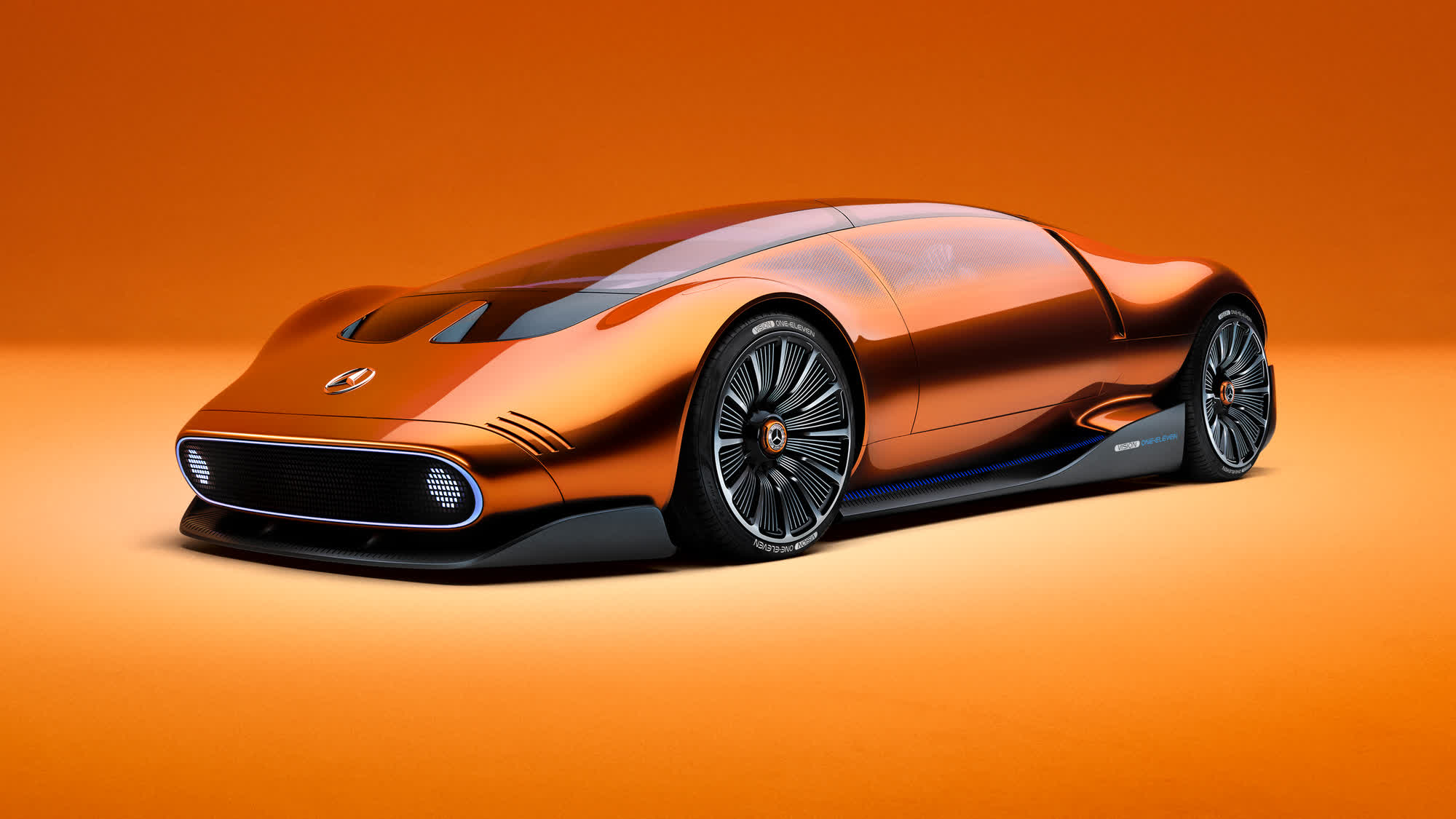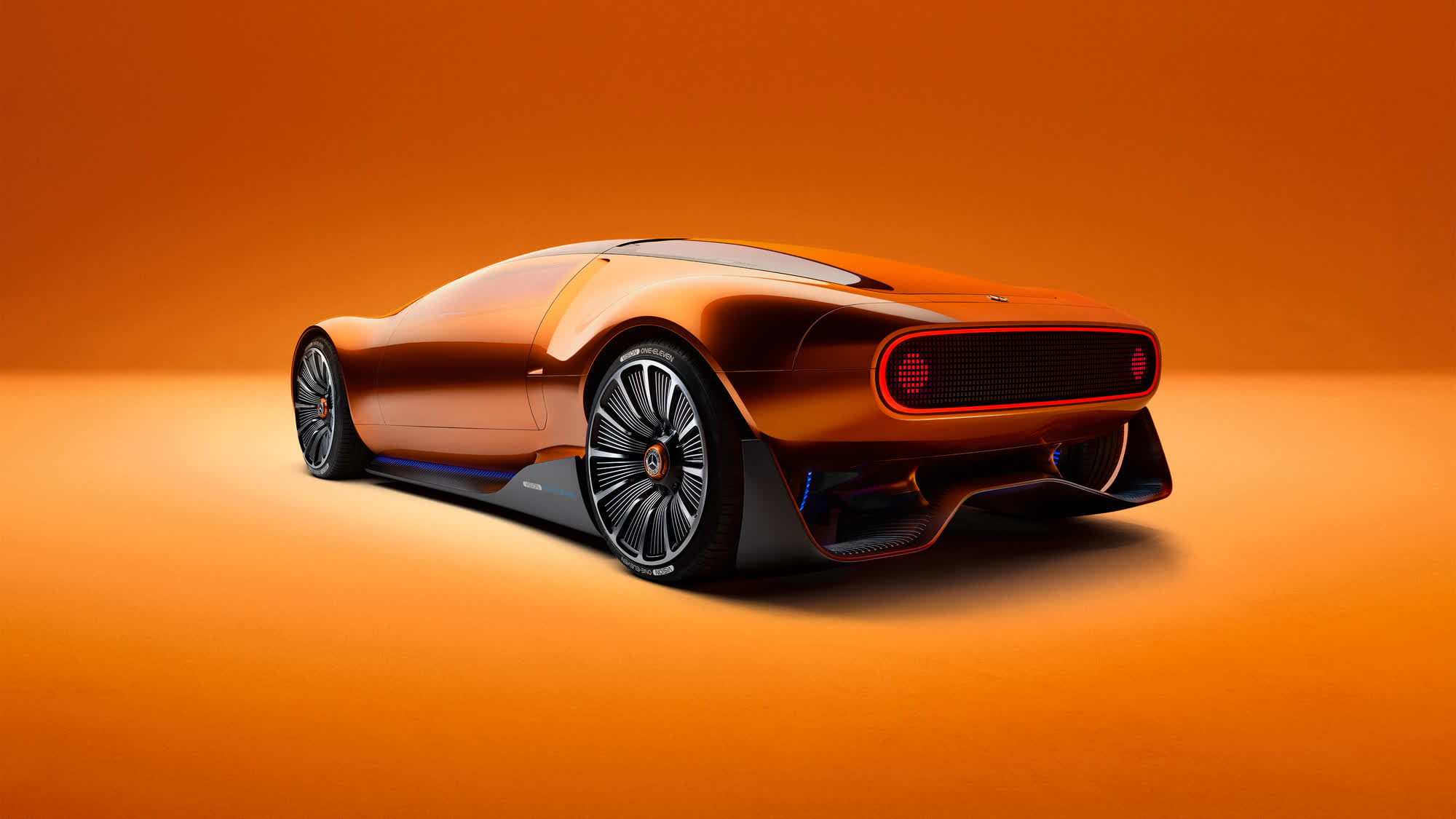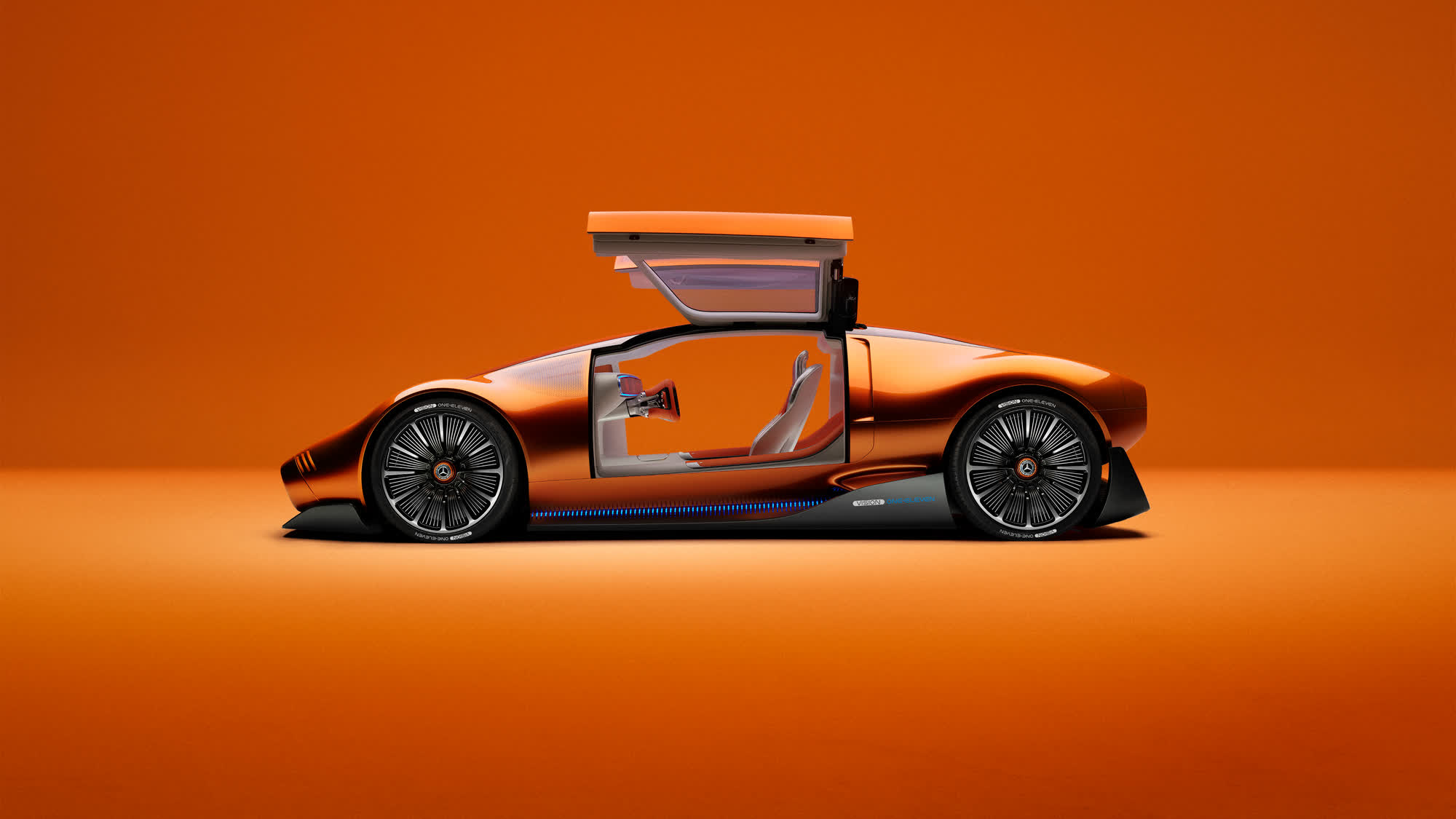What just happened? German luxury automaker Mercedes-Benz has showcased an electric roadster concept inspired by the iconic C 111 experimental prototypes from the 1960s and '70s. Called the Vision One-Eleven, the futuristic two-seater hypercar was unveiled at the Mercedes-Benz International Design Center in Carlsbad, California, and includes various technologies that will find their way to production models in the coming years. The car itself, however, won't ever make it to production lines.
The Vision One-Eleven features a monolith-style exterior design bathed in metallic orange, which the company claims is an homage to the iconic C 111. The interior is also a throwback to the C 111, with shiny dual-tone silver and orange upholstery in the cabin. In a statement describing the vehicle's eye-catching styling, the company's design boss, Gorden Wagener, said it reflects Mercedes-Benz's goals of creating iconic designs.
While the paint job and the flowing exterior panels are by far the most notable design elements of the concept car, it also borrows features from other iconic Mercedes-Benz vehicles of the past. One of those is the gull-wing doors that were pioneered by the Mercedes-Benz 300 SL in the early 50s. They were also very much a part of the C 111 coupes, so it only makes sense for Mercedes-Benz to include them in the new model.
For all the retro design flair, the most notable thing about the new concept is its new-edge electric powertrain that showcases technologies the company says will be headed to production vehicles. The Vision One-Eleven also comes with a liquid-cooled cylindrical-cell battery that uses cell chemistry developed for Formula-1 by engineers from Mercedes-AMG's High Performance Powertrain division in Brixworth, England.
The Vision One-Eleven comes with two rear axle-mounted axial-flux electric motors that the company says are significantly lighter and more compact than the radial-flux powertrains currently used in the vast majority of EVs, while still offering more power for better performance. Axial-flux motors are more efficient than than their radial-flux counterparts, as the electromagnetic flow runs parallel to the motor's rotational axis, as opposed to perpendicular. Axial-flux motors also have "considerably higher and more enduring power reserves, which delivers a whole new level of performance."
Another benefit of the new technology is its narrow footprint, which makes it smaller and lighter, thereby reducing the car's weight and saving space at the same time.
The automaker said motors based on the new technology require just one-third the space occupied by a radial-flux motor, thereby offering much more freedom to engineers and designers to creatively use the additional space and take advantage of the reduced weight. The axial-flux motors are being developed by Mercedes' wholly-owned British subsidiary Yasa for use in its next-generation electric vehicles, and will be produced at the company's Berlin-Marienfelde plant.


